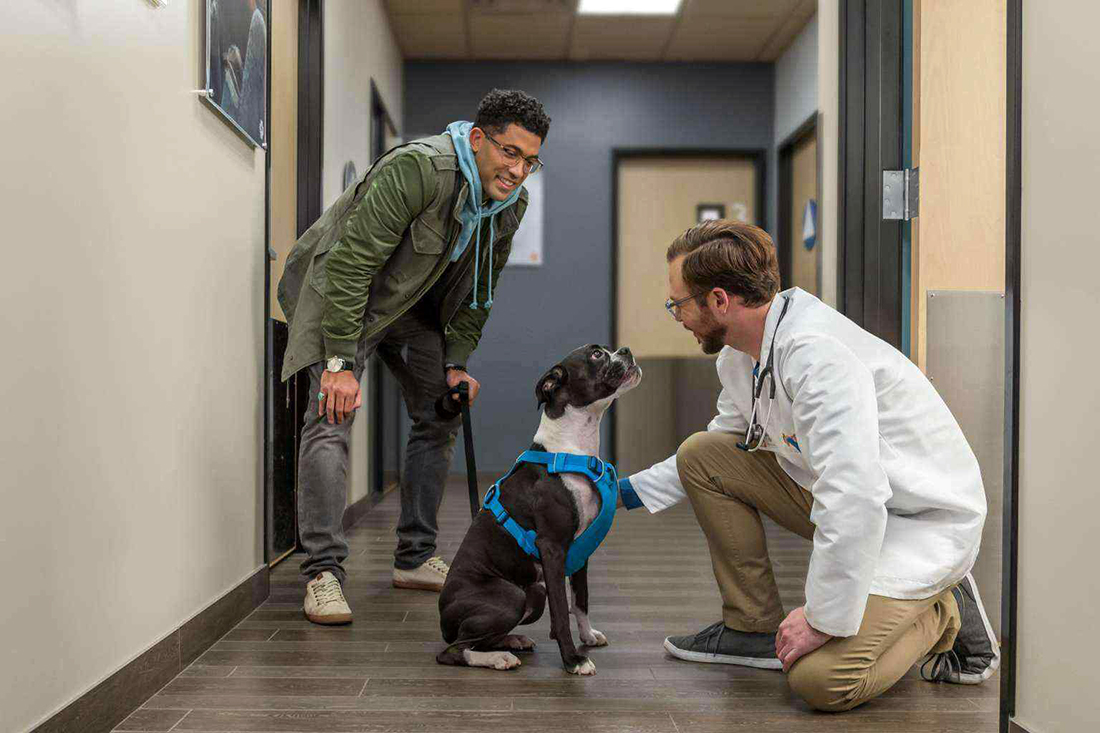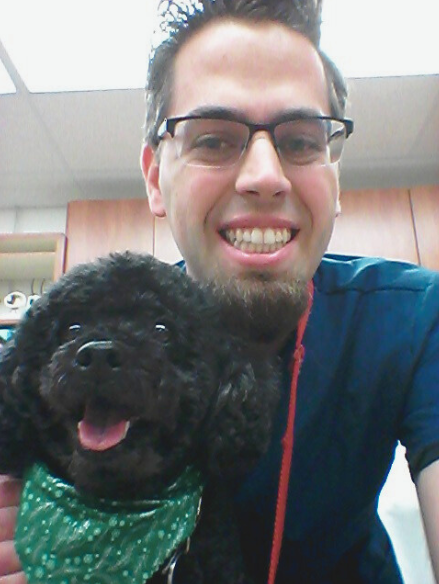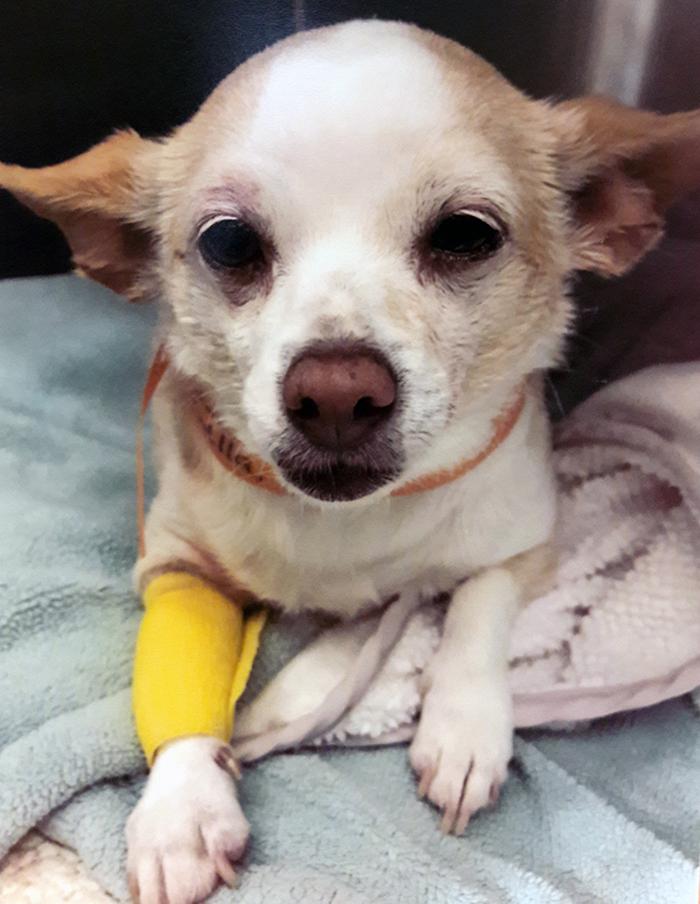No mere pet project: Veterinary clinic was Nate Bradford’s first foray into health care

Image courtesy of Banfield Pet Hospital
Few career paths follow a straight line. Most have gaps, temporary jobs, and work that doesn’t at all resemble how someone earns a living today.
Nate Bradford “didn’t have any training, certification as a vet tech, or prior interest in working at a vet” when he accepted a job with Banfield Pet Hospital, the largest privately owned veterinary practice in the United States with more than 1,000 locations across the U.S. and Puerto Rico, many inside PetSmart stores.

UIT’s Nate Bradford poses with one of his pat patients at Banfield Pet Hospital.
Bradford, a system administrator for UIT’s Service Monitoring team, worked at a Banfield clinic inside an Oxnard, California PetSmart, from 2015 to 2017, after which he transferred to a Banfield location in Taylorsville, Utah. He worked there until accepting a job the University of Utah Health’s ITS Service Desk in 2018.
“I took a chance on something that looked like a good opportunity and got really, really lucky because it was a great job,” Bradford said. “I’ve always maintained a deep level of respect for doctors, nurses, and clinical staff, and everybody else who supports the business of healing, so it made sense to get into the field myself.”
Bradford eventually stepped back from veterinary work but said “doing IT for health care was the perfect fit, given I had a languishing computer science degree.”
If you’re open to it, every job experience has value. Bradford said he learned a lot about himself working at an in-store pet clinic.
“I've always enjoyed learning how to do new things in every job I've had, and this was no exception, so after several months I began cross-training as a veterinary assistant,” he said. “By the end of my time, I was involved in pretty much any capacity I could help with.
“One of the multitude of lessons learned during my time there was to be patient with myself when it comes time to try new or challenging things … This job taught me how to get started without waiting for confidence to kick in.”
“This job taught me how to get started without waiting for confidence to kick in.”
– UIT’s Nate Bradford
Bradford was trained in front and back of house operations like answering phones, communicating between pet owners and vet staff, scheduling, making reminder calls, checking pets in and out of drop-offs and appointments, and opening and closing the clinic.
Someone unfamiliar with the field may think that vet techs just play with puppies and kittens all day, and while that’s certainly a perk, it’s a demanding and often messy job. Bradford drew blood and ran labs, helped veterinarians take exam notes, took vitals, cleaned exam rooms/back rooms, and took X-rays. His patients sometimes tried to bite and scratch him. He contended with yucky things that “don’t make for good dinner conversation” and considered himself lucky on days he went home without stains on his scrubs.
Overwhelmingly dogs and cats, the animals he cared for came in all sizes and temperaments. He said the affection of chihuahuas, for example, is earned, not given.

Bradford formed special bonds with particular animals, like this senior chihuahua.
Bradford formed a special bond with a curmudgeonly chihuahua that was “nearly blind, spoke with his teeth if you moved too quickly, and needed insulin shots twice a day.”
Part of pet wellness, Bradford said, is advocating for animals that can’t speak. Pets can’t tell you what hurts, so technicians and vets rely on body language, physical signs and symptoms, knowledge, and laboratory work to figure out what’s wrong.
Sometimes what’s wrong is the world is a big scary place, especially for little dogs.
“I didn’t let his harsh exterior prevent me from discovering the sweet softy hiding underneath the surface,” Bradford said. “I’ve met my fair share of good boys and girls, but this particular chi I remember to this day.”
Bradford also remembers the daily deluge of dental cleanings. He said scaling teeth to remove tartar, taking dental radiographs, polishing, and applying sealant is gratifying for technicians.
“We always had pets staying with us for the day for dental cleanings, which is done under anesthesia for their and the staff’s safety,” he said. “I remember how funny it always was to go say hi to the cute, poor, groggy little fellows.”
If he could give only one piece of advice to new pet owners, it’s this: Adopt whenever possible and schedule a vet visit soon after adoption.
“If you get a puppy that’s younger than 4 months old, please get them in for a checkup and make sure they get all their shots,” he said. “Puppies are susceptible to myriad diseases, and some, like parvovirus, are often lethal and completely avoidable if they’re properly vaccinated.”
Bradford follows his own advice. Chili, the female, orange tabby cat he cares for at home, is healthy and happy thanks to routine veterinary care.
“Cats are also great candidates for vaccines, especially if you intend to let them outdoors,” he said. “Get your pet spayed or neutered!”
Node 4
Our monthly newsletter includes news from UIT and other campus/ University of Utah Health IT organizations, features about UIT employees, IT governance news, and various announcements and updates.
